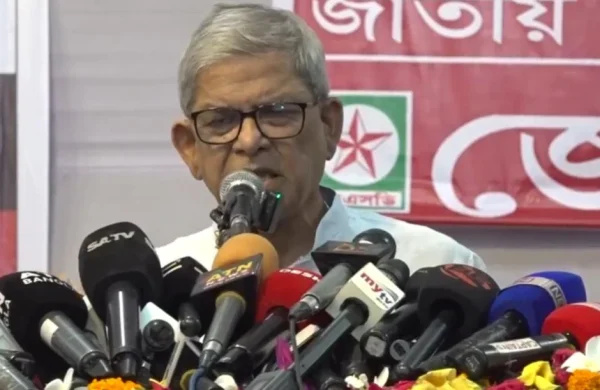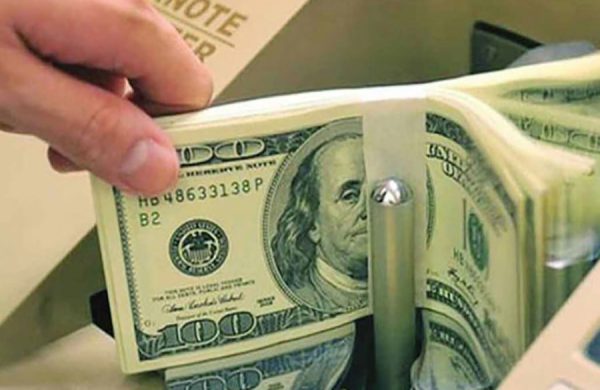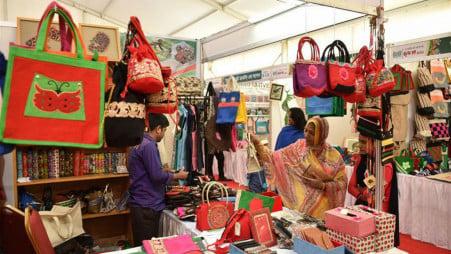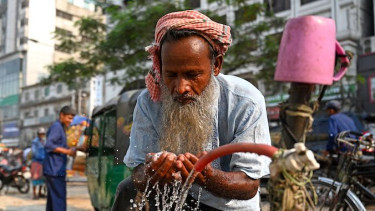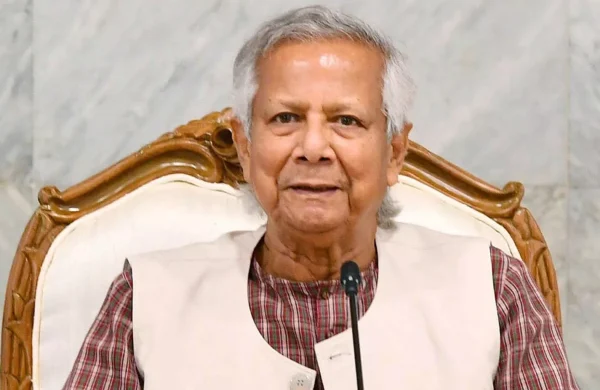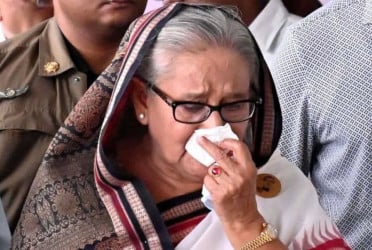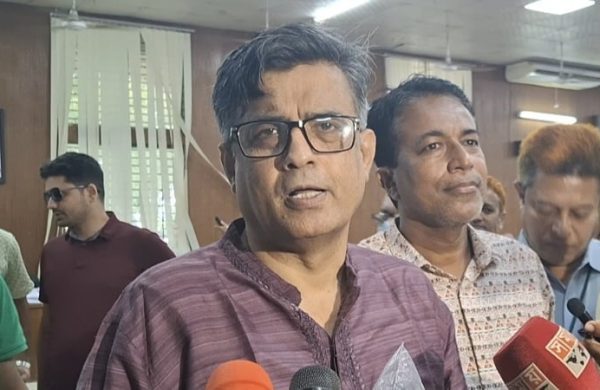Crab farming getting momentum in Sundarbans mangrove area
- Update Time : Wednesday, February 5, 2025
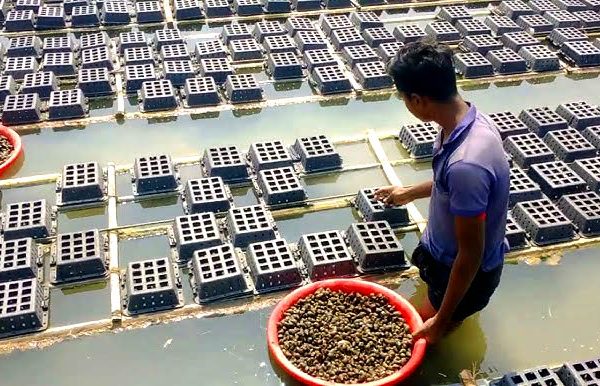
Mir Khairul Alam, Satkhira:
With the rising of farm number, crab farming in Sundarbans Mangrove areas is getting momentum day by day.
Sources said, crab is leading in export earnings. The demand of crab is constantly increasing in the international market. Since, it is much more delicious than lobster and has a low mortality rate, those concerned see immense potential. As a result, the number of farms is increasing in the mangrove area adjacent to the sea and the Sundarbans. Earlier, only live crabs were exported. Now, frozen soft-shelled crabs have taken that place.
The number of investors is increasing as the potential for earning crores of taka from investment has been created here. However, hatcheries have not been established to produce crablets like shrimp. As a result, farmers have to rely on fishermen who collect those from the rivers and canals of the Sundarbans for their fry.
Experts fear that, the biodiversity of the Sundarbans is facing serious danger due to reckless catching of crabs from natural sources.
According to the Department of Fisheries, export of soft-shelled crabs has been started increasing since the last five years.
In 2017, 164,571 metric tons of soft-shell exports earned $1,579,806.
In 2018, 349,287 metric tons of soft-shell exports earned $3,91,802, and in 2019, 595,840 metric tons of soft-shell exports earned $6,737,415. In 2020, exports were disrupted due to Corona. Some 364,877 metric tons of soft-shell exports earned 5,12,844 US dollars.
In the 9 months up to September 2021, 462,296 metric tons of soft-shell exports earned 6,499,587 US dollars. About 659;325 metric tons of reeds were exported in 2022, 884;282 metric tons of crabs were exported in 2023, 998;675 metric tons of crabs were exported in 2024. Among Asian countries, crabs are being exported to China, Taiwan, Hong Kong, Malaysia, Singapore and Thailand.
European Union countries, Britain, America, and Australia are now major markets for soft-shell crabs.
Due to increasing export earnings, the number of crab farms in the coastal region is increasing. Crab farms have been established in Shyamnagar, Ashashuni in Satkhira, Koyra, Paikgachha, Dakop in Mongla of Khulna and Rampal in Bagerhat.
However, Satkhira zone has gained special recognition for soft-shell crab. Although, crab fattening is done elsewhere, soft-shell farms and processing plants have been established only in Satkhira.
Satkhira District Fisheries Officer Anisur Rahman told TDS that, “Two processing plants have been established in this region. There is one hatchery. At least two more hatcheries will start operations by next year. There are 2,321 crab farmers in the district. Crab is cultivated on 307.90 hectares of land, from which 2,185.7 metric tons of crab are being produced.
VC of Khulna University Professor Dr. Mahmud Hasan in a webinar made remarks on the risks of reckless crablet harvesting from natural sources. He was the chief guest at the webinar organized by the Department of Fisheries and Marine Resource Technology (FMRT) recently. The VC said that, crabs play a vital role in protecting the environment of the Sundarbans. Due to the harvesting of crablets from natural sources, the biodiversity of the Sundarbans and the coastal areas is being lost. This loss can be reduced by producing crablets in hatcheries. There is a need to conduct a survey on the amount of crabs in the Sundarbans and research on crab farming in the country.
Fisheries expert and crab researcher Shamim Ahmed said, “It takes a lot of time, labor and research to produce fry in a hatchery. It took 23 years for a hatchery to become successful in Thailand. It took 16/17 years in Vietnam and 18 years in the Philippines. In our country, the first hatchery was established in Shyamnagar of Satkhira in 2016. But the success rate is so low that it is not commercially viable. There is a 12-month demand for crabs in the world.”
Md. Rashedul Islam, Associate Professor of FMRT discipline at Khulna University, claimed that, the government should not have allowed the export of soft-shelled crabs before the hatchery was successful. Earlier, fishermen used to catch adult crabs from the canals and rivers of the Sundarbans and from shrimp ponds in the locality. Those crabs were kept in a special enclosure and fed with food, fattened up and made suitable for live export. Now, due to soft-shelled crabs, a large number of immature crabs are also being produced and caught. Crabs boxed in a special enclosure are being frozen and exported after changing their shells two to three times. Earlier, there was an opportunity to lay eggs and breed in the natural environment. Now that is being destroyed. This is having an adverse effect on nature, damaging biodiversity.”
Dr. M B Munir, a teacher and aquaculture expert at a public university in Malaysia, said, “Bangladesh ranks fourth in the world in aquaculture. We have the largest mangrove area in the world. No one has a bigger potential than us. Malaysia is far behind Bangladesh. But they are successful in crablet hatcheries. We are still trying. They do a lot of research. They make a profit by saving nature. We have no research. We want the highest profit, so we don’t have a headache even if nature is destroyed.”
Khulna Fish Inspection and Quality Control Officer Md. Zahidul Hasan said that, “The number of fishermen and boats collecting crabs from the Sundarbans is increasing. Crablets are being caught indiscriminately. Along with catching crab fries, other species of fishes or aquatic animals are being caught. They are being discarded and destroyed as they are not needed. Nature must be allowed to take its course. Otherwise, nature will take revenge at some point.
Although there is no specific research data on crabs in the Sundarbans, the forest department has taken various steps to protect this resource. Satkhira Range Assistant Forester Mashiur Rahman said that, “Crab fishing is completely prohibited for two months from January to February due to the breeding season. All types of fishing are prohibited from June to August. Going into the river is prohibited for 22 days to protect Hilsa. It will be closed for another 7 days during the Rash Mela. In addition, fishermen are prohibited from entering 18 sanctuary areas and canals less than 25 feet wide. Catching crabs using ‘Chai’ is prohibited. Strict punitive action is taken, if anyone violates the law.”
Sources associated with the export-oriented soft shell processing plant claim that there is no research on crabs at any government or private level. There is no specific data. As a result, everyone is putting forward one theory at a time. When it is time for crabs to reproduce and lay eggs, they go to the deep sea. After laying eggs, they return. A mother crab lays 5-6 lakh eggs at a time. Out of these, 15 to 20 percent of the babies hatch. Now, crab fishing is prohibited in the Sundarbans for six months a year. During this time, their number increases several times. In addition to the mangrove forest, crabs are supplied from shrimp farms. At one time, there was no demand for crabs. Fishermen used to throw them away. After that, live crab exports started. Now, the demand for soft shell is continuously increasing. The establishment of the processing plant has changed the fate of the people in this town. Economic disaster was caused by increased salinity, repeated natural disasters, and crop losses. Those people are now producing and selling soft -shells on farms. Those who were always living in extreme poverty are now eating rice three times a day. Hatcheries will reduce the pressure on nature. But the government has no initiative in this regard. Moreover, the concerned departments create obstacles in exports under the pretext of various laws and policies. Initiatives are ongoing to make hatcheries successful.
Bangladesh Frozen Food Exporters Association (BFFEA) Vice President S. Humayun Kabir termed crab to a frozen product with immense potential and said, “We have to take steps to increase both its cultivation and export. We have to bring success to the hatchery without disturbing nature. Then the farms will increase, the processing plants will increase. The mortality rate of crabs is low, the endurance is high. Along with shrimp, crabs will earn unimaginable foreign exchange.”
According to the information he gave, three companies from this region are involved in crab processing. They are – Japan Fast Trade, Farid Nine Star and Shampa Ice and Cold Storage. Khulna Divisional Deputy Director of the Fisheries Department Md. Abu Sayeed said, “We have various steps to conserve mother crabs. We discourage the collection of crablets from nature.”
“A hatchery has already been set up in Shyamnagar to meet the demand of farmers. There will be more hatcheries through government initiatives. We must conduct our economic activities while protecting nature,” he added.




